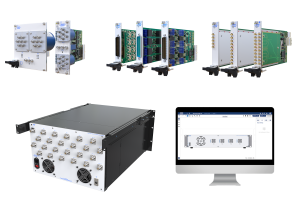Orbbec, an industry leader dedicated to 3D vision systems, today announced a suite of products developed in collaboration with Microsoft based on its indirect time-of-flight (iToF) depth sensing technology that was brought to market with HoloLens 2. This suite of cameras combine Microsoft’s iToF technology with Orbbec’s high-precision depth camera design and in-house manufacturing capabilities and will broaden the application and accessibility of high-performance 3D vision in logistics, robotics, manufacturing, retail, healthcare and fitness industries.
“Orbbec devices built with Microsoft’s iToF technology use the same depth camera module as Azure Kinect Developer Kit and offer identical operating modes and performance,” said Amit Banerjee, Head of Platform and Partnerships at Orbbec. “Developers can effortlessly migrate their existing applications to Orbbec’s cameras by using the API bridge provided as part of their SDK.”
Developers building enterprise solutions can now develop their applications with any of the devices but use the best matched device for the deployment scenarios, e.g. applications developed and qualified using the Femto Mega can be deployed in harsh industrial applications using the Femto Mega I. Similarly, applications requiring an attached external computer can use the Femto Bolt. All cameras support a sophisticated precise trigger sync system for integration into a multi-sensor, multi-camera network.
The devices have 1 mega-pixel depth cameras with a wide 120° field of view (FOV) and a broad range from 0.25m to 5.5m. It’s combined with a high performance 4K resolution RGB camera with 90° FOV. A 6DOF IMU module provides orientation.
- Femto Bolt: Customers interested in a solution like Azure Kinect Developer Kit will find Orbbec’s Femto Bolt an ideal match for their commercial deployments. Beyond depth camera and architectural compatibility, it also has a more compact form factor ideal for commercial installations. The RGB camera has been enhanced with HDR capability. This is currently sampling and will be available for volume orders in October.
- Femto Mega: Announced in January 2023 and currently in production, Femto Mega is still the industry’s highest resolution smart camera. This device uses a built-in NVIDIA® Jetson™ Nano to run the advanced depth vision algorithms to convert raw data to precise depth images and thus, eliminates the need for an external PC or compute device. It also adds Power over Ethernet (PoE) connection for both data and power that is ideally suited for deployment where the camera must be placed away from the compute units or in multi-camera solutions. The developer mode SDK allows execution of AI models on the device.
- Femto Mega I: Currently shipping, Femto Mega I is the industry’s highest performance ruggedized intelligent camera with an IP65 rating for warehouses, manufacturing and other harsh environments.
The universal trigger control hub enables easy connection using standard ethernet cables for multi-camera and multi-sensor networks. The SDK enables easy setup and registration, and a rich set of APIs allows integration with various applications.
“Since 2021, we’ve collaborated with Orbbec to bring more camera options using Microsoft’s iToF depth technology into the market to cater to a broad range of usage scenarios,” said Swati Mehta, Senior Director, Engineering, Microsoft. “The availability of Orbbec’s products provide customers with a broad set of choices that make 3D sensing technology accessible globally for a wider range of applications.”
“Orbbec’s mission is to provide superior, accessible, and easy-to-integrate RGB-D technology”, said David Chen, Co-Founder and Head of Products at Orbbec 3D. “Beyond our standard products, we can help customers with custom design and ODM services backed by our specialized design skills and manufacturing experience in high-performance cameras.”
 Instrumentation Monthly Test | Measurement | Control
Instrumentation Monthly Test | Measurement | Control












